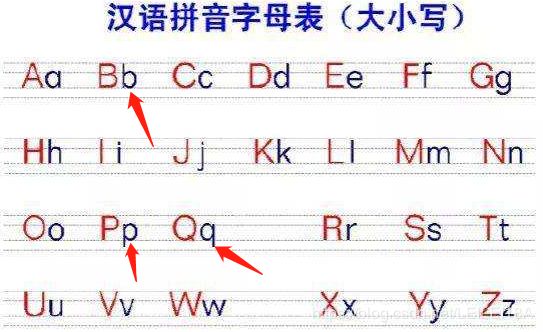darknet yolov4 python接口测试图像
darknet yolov4 python(linux gpu)接口测试图像
目录
1.安装教程
2.darknet python目标检测接口
3.可视化效果
1.安装教程
按照github darknet yolov4要求配置即可,会出现lib.so文件。
2.darknet python目标检测接口
代码如下:主要调用darknet.py文件,此外自己写了自适应字体展示代码(与darknet终端命令得到的图像一样优美)
'''
注释:
author is leilei
darknet python调用接口,参考darknet.py即可!
此代码为batch=1的测试代码,逐帧检测。
'''
import os
import cv2
import numpy as np
import random
import darknet
class Detect:
def __init__(self, metaPath, configPath, weightPath, namesPath):
'''
:param metaPath: ***.data 存储各种参数
:param configPath: ***.cfg 网络结构文件
:param weightPath: ***.weights yolo的权重
:param namesPath: ***.data中的names路径,这里是便于读取使用
'''
# 网络
self.netMain = darknet.load_net_custom(configPath.encode("ascii"), weightPath.encode("ascii"), 0, 1)
# 各种参数
self.metaMain = darknet.load_meta(metaPath.encode("ascii"))
# 读取标签类别名称列表
self.names = self.read_names(namesPath)
# 每类颜色肯定一致,但是每次执行不一定都一样
self.colors = self.color()
def read_names(self, namesPath):
# 专门读取包含类别标签名的***.names文件
with open(namesPath, 'r') as f:
lines = f.readlines()
altNames = [x.strip() for x in lines]
f.close()
return altNames
def color(self):
# rgb 格式
colors = [[random.randint(0, 255) for _ in range(3)] for _ in range(self.metaMain.classes)]
return colors
def predict_image(self, image, thresh=0.25, is_show=True, save_path=''):
'''
:param image: cv2.imread 图像, darknet自己会对图像进行预处理
:param thresh: 置信度阈值, 其它阈值不变
:param is_show: 是否将画框之后的图像返回
:param save_path: 画框后的保存路径
:return: 返回1个矩阵
'''
# bgr->rgb
rgb_img = image[..., ::-1]
# 获取图片大小,网络输入大小
height, width = rgb_img.shape[:2]
network_width = darknet.network_width(self.netMain)
network_height = darknet.network_height(self.netMain)
# 将图像resize到输入大小
rsz_img = cv2.resize(rgb_img, (network_width, network_height), interpolation=cv2.INTER_LINEAR)
# 转成tensor的形式,以及[1,C,H,W]
darknet_image, _ = darknet.array_to_image(rsz_img)
detections = darknet.detect_image(self.netMain, self.metaMain, darknet_image, thresh=thresh)
if is_show:
for detection in detections:
x, y, w, h = detection[2][0], \
detection[2][1], \
detection[2][2], \
detection[2][3]
# 置信度
conf = detection[1]
# 预测标签
label = detection[0].decode()
# 获取坐标
x *= width / network_width
w *= width / network_width
y *= height / network_height
h *= height / network_height
# 转成x1y1x2y2,左上右下坐标; x是w方向
xyxy = np.array([x - w / 2, y - h / 2, x + w / 2, y + h / 2])
index = self.names.index(label)
label_conf = f'{label} {conf:.2f}'
self._plot_one_box(xyxy, rgb_img, self.colors[index], label_conf)
bgr_img = rgb_img[..., ::-1]
# 保存图像
if save_path:
cv2.imwrite(save_path, bgr_img)
return bgr_img #返回画框的bgr图像
return detections
def _plot_one_box(self, xyxy, img_rgb, color, label):
# 直接对原始图像操作
img = img_rgb[..., ::-1] # bgr
pt1 = (int(xyxy[0]), int(xyxy[1])) # 左上角
pt2 = (int(xyxy[2]), int(xyxy[3])) # 右下角
thickness = round(0.001 * max(img.shape[0:2])) + 1 # 必须为整数
# if thickness > 1:
# thickness = 1 # 可强制为1
cv2.rectangle(img, pt1, pt2, color, thickness) #画框,thickness线粗细
# 获取字体的宽x-高y,实际上此高y应该乘1.5 才是字体的真实高度(bq是占上中、中下3个格)
t_size = cv2.getTextSize(label, cv2.FONT_HERSHEY_SIMPLEX, fontScale=thickness / 3, thickness=thickness)[0]
# 按照2种方式显示,默认是在框上面显示,当上框仅挨着上边界时,采用框内显示;右边界不管
c1 = (pt1[0], pt1[1]-int(t_size[1]*1.5)) if pt1[1]-int(t_size[1]*1.5) >= 0 else (pt1[0], pt1[1])
c2 = (pt1[0]+t_size[0], pt1[1]) if pt1[1]-int(t_size[1]*1.5) >= 0 else (pt1[0]+t_size[0], pt1[1]+int(t_size[1]*1.5))
# 字体框内背景填充与框颜色一致
cv2.rectangle(img, c1, c2, color, -1) # 当thickness=-1时为填充
# 绘制文本,文本是在下1/3位置开始
text_pos = (c1[0], c1[1]+t_size[1])
cv2.putText(img, label, text_pos, cv2.FONT_HERSHEY_SIMPLEX, thickness / 3, [225, 255, 255], thickness=thickness, lineType=cv2.LINE_AA)
if __name__ == '__main__':
# gpu 通过环境变量设置CUDA_VISBLE_DEVICES=0
detect = Detect(metaPath=r'./cfg/helmet.data',
configPath=r'./cfg/yolov4-obj.cfg',
weightPath=r'./backup/yolov4-obj_best.weights',
namesPath=r'./data/helmet.names')
# coco权重
#detect = Detect(metaPath=r'./cfg/coco.data',
# configPath=r'./cfg/yolov4.cfg',
# weightPath=r'./yolov4.weights',
# namesPath=r'./data/coco.names')
image = cv2.imread(r'/home/Datasets/image/200205_3430.jpg', -1)
detect.predict_image(image, save_path='./pred.jpg')
###############################################################
''' 读取视频,保存视频 '''
cap = cv2.VideoCapture(r'/home/Datasets/fire1.avi')
# 获取视频的fps, width height
fps = int(cap.get(cv2.CAP_PROP_FPS))
width = int(cap.get(cv2.CAP_PROP_FRAME_WIDTH))
height = int(cap.get(cv2.CAP_PROP_FRAME_HEIGHT))
count = int(cap.get(cv2.CAP_PROP_FRAME_COUNT))
print(count)
# 创建视频
fourcc = cv2.VideoWriter_fourcc(*'mp4v')
video_writer = cv2.VideoWriter(r'/home/Datasets/fire1.mp4', fourcc=fourcc, fps=fps, frameSize=(width,height))
ret, frame = cap.read() # ret表示下一帧还有没有 有为True
while ret:
# 预测每一帧
pred = detect.predict_image(frame)
video_writer.write(pred)
cv2.waitKey(fps)
# 读取下一帧
ret, frame = cap.read()
print(ret)
cap.release()
cv2.destroyAllWindows()
3.可视化效果
(左自己代码产生,右darknet命令产生,下coco权重可视化效果)



